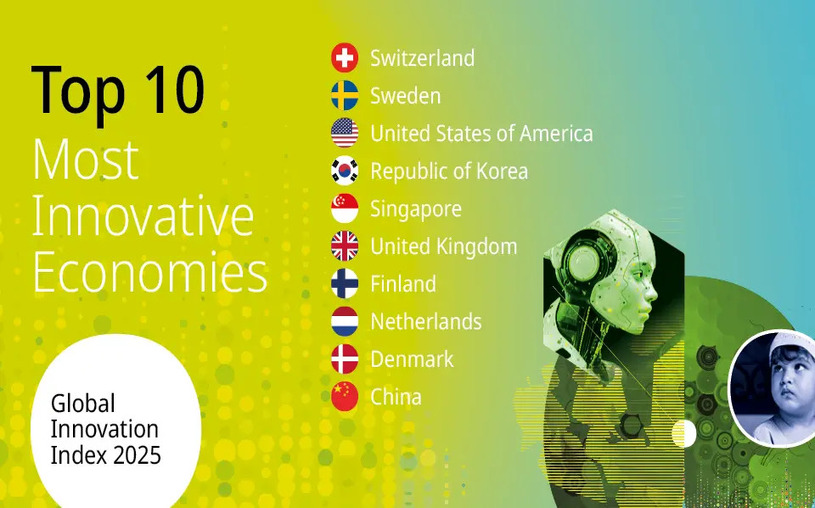On September 15th, in response to a world faced with slowing innovation, the World Intellectual Property Organization (WIPO) released their 2025 Global Innovation Index. The Global Innovation Index, known as the GII, compares 139 different countries across seven different designated regions. With the release of this report, the WIPO hopes not only to emphasize which nations are spearheading humanity’s constant pursuit of technological progress, but also to draw attention to a concerning regression in innovation globally.
2025 marks the third year in a row the world has seen a decline in investment in research and innovation. This trend led to perceived innovation efforts dropping last year to the lowest rate they have been since 2024. A decrease in venture capital and resources designated for development is the primary culprit, with investors continuing to seem subdued after what was a surge in innovation in the early 2020s prompted by the pandemic.
Despite this, the WIPO remains optimistic for the outlook of global innovation. Rather than considering these trends to be alarming, the WIPO declared that “innovation isn’t standing still. It’s recalibrating.” The organization bases this claim on the research they’ve conducted on nearly 140 countries and point to the GII as one of the best ways to understand the future of technological development.
Claiming the first two spots on the list are two European nations. Switzerland has been deemed the leading nation when it comes to research, development, and funding for innovation. They are followed by Sweden, with the United States coming in behind them at third. The top ten also hosts three nations from South East Asia and Oceania, with the Republic of Korea, Singapore, and China placing at four, five, and ten respectively. Notably, this is the first time that China has been considered by the WIPO to be within the top ten on the Global Innovation Index.
There is also a clear distinction on the GII in which regions are contributing more than others. Europe and South East Asia are represented the most globally, with the Middle East and Northern Africa being labelled as two of the fastest growing areas when it comes to innovation. While Southern and Central Asia, Latin America, and Sub-Suharan Africa all rank lower on the index, several nations from each of these regions are classified by the WIPO as providing a high amount of innovation when considering their own development. Places like Brazil, Thailand, Uzbekistan, and Rwanda all fall into this category.
The GII is not just a diagnosis on the state of innovation in the world, but also a practical tool that offers a comprehensive glimpse into the state of a nation’s research and development. Currently, the group reports that “over 90 governments use WIPO’s GII to track their innovation performance, and as a compass to navigate and shape their future.” For nations like India, Türkiye, Viet Nam, Indonesia, Morocco, and the Philippines, their rapidly increasing rankings serve as a testament to successful efforts. On the other hand, certain countries may see their respective rankings as a significant sign of a need for a greater focus on their own innovation programs.
Regardless of the current dip in global innovation, the WIPO and their report signify several exciting trends. There are dozens of nations who are still producing effective results and making strides in a variety of important fields. While funding and connection with venture capitalists is slowing, opportunities for small to large endeavors are still incredibly common and encouraged. In an ever-evolving world, the WIPO offers another tool for all of us to better understand the future of advancement and progress.
Source: World Intellectual Property Office


